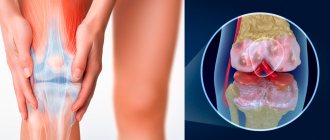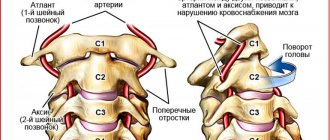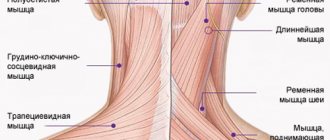Etiology and pathogenesis of narcolepsy
Scientists have not yet been able to establish the exact causes of narcolepsy. For a long time, it was believed that the etiology of the disease was closely related to mental disorders. However, this theory was not confirmed. Nowadays, a theory is being actively researched that proves that the disease occurs due to a lack of a neurotransmitter, which is responsible for maintaining wakefulness. Namely, a biologically active substance, the deficiency of which leads to narcolepsy, may be hypocretin. This deficiency may be genetically determined or occur in cases of severe fatigue, severe infection, pregnancy, or traumatic brain injury.
Another theory proves the autoimmune mechanism of pathology. Proof of this theory is that abnormal T lymphocytes are found in patients with narcolepsy. In addition, the autoimmune origin of the pathology is evidenced by the onset of its development after vaccination or the detection of infectious diseases (measles, influenza). No more is known about the pathogenesis of the pathology than about its origin. Scientists suggest that the main problem of the disease is the untimeliness of the REM sleep phase - it is introduced both during the waking period and the slow-wave sleep phase.
Narcolepsy - causes
The exact cause of narcolepsy is unknown, but is probably related to hypocretin
or
orexin
. This is a chemical that the brain needs to stay awake.
Certain genetic characteristics may increase the risk of narcolepsy. Narcolepsy is likely the result of a combination of genetic and environmental factors.
Hypocretin is a neurotransmitter that controls whether a person is asleep or awake by affecting different groups of nerve cells and neurons in the brain. The hypothalamic region of the brain produces hypocretin.
People with narcolepsy type 1 have low levels of hypocretin, but those with narcolepsy type 2 do not.
Hypocretin is necessary to stay awake, and when it is deficient, the brain allows REM sleep to interfere with normal periods of wakefulness. In people with narcolepsy, this leads to both excessive daytime sleepiness and nighttime sleep problems.
Traumatic brain injury, tumor, or other conditions affecting the brain can also cause narcolepsy.
Symptoms of Narcolepsy
The clinical picture of the disease includes four main symptoms: daytime sleepiness, cataplexy, hypnagogic hallucinations and insomnia. Typically, patients experience several of these symptoms at the same time; all four symptoms are diagnosed at once in 10% of cases.
- Daytime sleepiness
- Cataplexy
- Hypnagogic hallucinations
- Sleep paralysis
A patient with narcolepsy experiences several bouts of irresistible drowsiness throughout the day. Such attacks can be either single or multiple. The duration of attacks ranges from several minutes to a couple of hours. The patient is practically unable to resist sudden falling asleep, but he can be woken up in the same way as during normal sleep. In most cases, attacks occur in a monotonous environment, which can cause drowsiness in a healthy person (reading, watching TV).
The patient can also fall asleep in critical situations that require increased attention (while eating, talking, driving a car). After waking up, the patient often feels rested and alert, but after a couple of minutes he may fall asleep again. Night sleep in patients with narcolepsy is often fragmented and accompanied by nightmares, resulting in low productivity and performance during the day. Patients experience decreased motivation, poor concentration, and may experience depression. Patients with narcolepsy are susceptible to increased trauma.
This condition is characterized by sudden muscle weakness and paralysis caused by emotional reactions such as joy, fear, anger, surprise. Weakness can manifest itself in one limb or be generalized. In the latter case, after emotional impact, the patient suddenly collapses. Cataplexy is observed in a third of all patients with narcolepsy.
People with narcolepsy may experience unusual visual and auditory hallucinations while falling asleep. They resemble overly vivid dreams that occur during REM sleep. Most often, such illusions bother children. In adult patients, hallucinations are diagnosed extremely rarely.
A quarter of all patients with narcolepsy suffer from sleep paralysis. This is a transient muscle weakness that occurs when falling asleep or waking up. It does not allow the patient to make voluntary movements. Patients usually feel intense fear due to the inability to move.
Signs and symptoms
The development and severity of symptoms associated with narcolepsy vary greatly from person to person. The first symptoms appear one at a time; The onset of new symptoms may take years, with cataplexy usually preceding somnolence. Narcolepsy usually begins in adolescence, where initial symptoms are mild but worsen with age. Sometimes symptoms do not change for months, and sometimes symptoms can change very quickly. Depending on the severity of the disease, narcolepsy can dramatically affect a person's daily routine, disrupting all aspects of their life.
Excessive daytime sleepiness (EDS) is usually the first sign of narcolepsy. People with narcolepsy typically experience periods of sleepiness, fatigue, lack of energy, an overwhelming desire to sleep (“sleep attack”), and/or an inability to resist sleep. This tendency to become endlessly sleepy and/or fall asleep can occur every day, but the severity varies from day to day and throughout each day. These episodes are more likely to occur during monotonous, boring activities, such as watching television. However, attacks can occur at any time, even while a person is walking, talking, eating, or driving a car. Consequently, narcolepsy can seriously disrupt a person's life. Patients may fall asleep for short periods ranging from a few seconds to several minutes.
Narcolepsy can also disrupt sleep patterns at night. Patients may wake up frequently during the night and may remain awake for significant periods of the night. Despite the disruption of sleep patterns, the total sleep time for people with narcolepsy every 24 hours is generally normal, as they sleep multiple times during short periods of the day and night.
Many people with narcolepsy experience weakness and sudden loss of muscle tone (cataplexy). This often occurs during times of strong emotions such as laughter, anger, delight and/or surprise. Episodes of cataplexy may occur as short periods of partial muscle weakness and may vary in duration and severity. In some cases, the cataplectic attack may be barely noticeable. Sufferers may experience very short, mild episodes that cause the knees to buckle, the jaw to become full, or the eyelids to droop or the head to droop. Sometimes, in severe cases, there may be an almost complete loss of muscle control that lasts for several minutes. During a severe cataplectic attack, speech and movement may become difficult or impossible, although loss of consciousness does not occur. Cataplexy may improve as affected people get older.
Some people with narcolepsy do not have cataplexy and are not required to diagnose narcolepsy. Cataplexy usually develops about a few weeks to months after the onset of excessive daytime sleepiness. In rare cases, cataplexy may precede the development of difficulty maintaining vigilance.
Some people with narcolepsy may experience hallucinations, which may occur at the beginning or end of a period of sleep. They are often bright and frightening. Examples of hallucinations may include a telephone ringing or a person walking nearby, seeing people or animals that are not there, or having an out-of-body experience. When hallucinations occur after awakening, they are called hypnopompic hallucinations; when they occur during sleep, they are called hypnagogic hallucinations. Hallucinations often occur in combination with sleep paralysis.
People with narcolepsy may experience temporary sleep paralysis. They may be briefly unable to move their limbs or head or speak. Episodes of sleep paralysis are very short and usually coincide with falling asleep or waking up. After these short episodes, all movement is restored in affected individuals.
Some patients may also experience additional symptoms, including fatigue, depression, difficulty concentrating and memory problems. Periodic limb movement syndrome and sleep apnea have also been reported in people with narcolepsy.
Diagnosis of narcolepsy
It is not possible to diagnose a patient with narcolepsy immediately; on average, the diagnosis is made 10 years after the onset of the disease. Patients who complain of symptoms characteristic of narcolepsy are examined by a neurologist. It must be taken into account that the disease is similar in its clinical manifestations to many other neurological pathologies. That is why, for the most accurate diagnosis, consultations with such specialists as a psychiatrist, endocrinologist, epileptologist, infectious disease specialist, and gastroenterologist may be required.
Differential diagnosis
It is necessary to differentiate narcolepsy first of all from epilepsy. The symptoms of the pathology are also similar to the clinical picture of other types of hypersomnia: psychophysiological, post-traumatic (provoked by a traumatic brain injury, the presence of an intracerebral hematoma), psychopathic (occurs against the background of mental disorders such as schizophrenia or hysteria), associated with inflammatory, tumor or vascular, cerebral diseases, caused by somatic pathologies (diabetes mellitus, pernicious anemia, hypothyroidism, liver failure).
Polysomnography
The disease can be diagnosed using polysomnography, which is accompanied by EEG recording and MSLT test. An in-depth and most accurate study of pathology is carried out by a somnologist in the laboratory. The polysomnography technique involves a thorough study of the patient's night sleep. To do this, you need to spend the whole night in a specially designed room under the supervision of a doctor. Using this technique, it is possible to detect a violation of the alternation of sleep phases: an increase in the duration and frequency of the REM sleep phase. The technique also allows you to eliminate similar sleep disorders.
Important
Diagnosis by sleep pattern. Two tests are usually performed to confirm the diagnosis: polysomnography and the MSLT test.
For polysomnography, you must spend the night in a sleep laboratory. You will be asked to sleep in an environment as close to your usual environment as possible. Small electrodes will be attached to the skin using a sticky jelly-like substance. They record brain waves, muscle activity, heart rate and eye movements. The test is necessary to rule out other disorders that have similar symptoms.
The next day, the MSLT test is performed. During the daytime, with the same electrodes, you will be asked to sleep for 20 minutes four to five times at intervals of two hours. The MSLT test examines your sleep pattern. People with narcolepsy have a different sleep pattern from healthy people.
MSLT test
The day after the polysomnography, the doctor may prescribe an MSLT test for the patient. Namely, the patient will need to try to fall asleep five times during the day. The interval between periods of short-term sleep should be about 2-3 hours. After conducting an MSLT test, a doctor can make a diagnosis if at least two sleep episodes are confirmed. For a more accurate study of the disease, the doctor may prescribe periods of hidden drowsiness. Differential diagnosis of narcolepsy involves the following diagnostic measures: ophthalmoscopy, duplex scanning, MRI of the brain, ultrasound of cerebral vessels.
there is hope
Of course, this is a disease that cannot be ignored. Those who suffer from it should choose their profession with special care. They are contraindicated from working at heights, with moving mechanisms, requiring increased attention, or night shifts. During an exacerbation, it is necessary to have the opportunity for short sleep breaks of 15–20 minutes at 2–3 hour intervals during the day.
At the beginning of this century, a scientific discovery was made that finally helped to understand the nature of this mysterious disease. Researchers have found that patients with narcolepsy lack orexin, a special hormone found in the brain. American scientists have developed a nasal spray that contains the hormone orexin A. During experiments (the drug was tested on monkeys), it turned out that after its injection the animals felt great, even if they did not sleep enough. Naturally, the development immediately aroused interest among the military. There is also hope for patients with narcolepsy: perhaps the day is not far off when this disease will no longer be incurable.
Sleeping mode
Treatment of patients with narcolepsy should begin with normalizing their sleep and wakefulness patterns. It is strongly recommended that you go to bed and wake up at the same time. Almost all patients are shown the following sleep regimen: 7-8 hours of night sleep and two periods of daytime sleep from 15 minutes to half an hour. It is also important to take care of the quality of your sleep. To do this, you should avoid overeating, eating heavy food, and drinking alcohol in the evening.
In addition, patients should change their lifestyle: reduce the impact of stressful situations, significantly reduce the use of stimulants (coffee or nicotine), and begin to actively engage in sports. Often, people with narcolepsy experience a disruption in their biological clock, so they are active at night and feel sleepy during the day. For them, choosing a job that coincides with their natural sleep cycle would be ideal. Such a regime will allow you to get rid of the need to force your body to adhere to a standard operating mode and take stimulant drugs to eliminate drowsiness.
Patients with narcolepsy are advised to take short naps during the day. It is very important to plan your day so that you can take a 10-15 minute nap at least twice. Such sleep cannot fully replace nighttime sleep, but it will help overcome daytime sleepiness.
Drug treatment
Drug treatment of patients with mild or moderate drowsiness begins with the administration of modafinil, which stimulates wakefulness. At the same time, the drug does not cause a feeling of euphoria or addiction syndrome. It is recommended to take it in the morning in an amount of 100-200 mg orally. If this amount of the drug is not enough to relieve the symptoms of the disease, then the doctor will additionally prescribe another 100 mg. In the most difficult situations, according to indications, the daily dose can be increased to 400 mg.
If narcolepsy does not respond to treatment with modafinil, then the patient is prescribed amphetamine derivatives: methylphenidate or dextroamphetamine. However, it must be remembered that these medications have serious side effects: addiction with a high risk of addiction, tachycardia, arterial hypertension. To reduce the incidence of cataplexy, patients with narcolepsy are prescribed the following drugs: serotonin reuptake inhibitors (Prozac), tricyclic antidepressants (anafranil and tofranil).
Treatment and lifestyle
Today, therapy can only slightly affect the symptoms of the disease, but cannot completely eliminate it.
There are different methods of therapy in different countries. In Western countries, psychostimulants are used for essential narcolepsy. They help mitigate the effect of the disease on the body.
In Russia, due to the lack of medical psychostimulants, therapy for narcolepsy does not exist. In order to correct the sleep patterns of patients, sleeping pills are used.
Treatment for cataplexy attacks includes the use of selective inhibitors and tricyclic antidepressants.
The use of sodium hydroxybutyrate is also popular. Repeated studies have found that Xyrem helps with cataplexy and can be considered a preventative drug for narcolepsy.
Patients with narcolepsy are advised to maintain a specific and consistent sleep schedule.
To improve sleep quality, it is recommended to reduce the consumption of heavy foods and minimize alcohol consumption.
People with Gelineau's disease are contraindicated in professions related to driving, as well as working with mechanized equipment.
The first stage in the fight against narcolepsy is prevention with Modafinil. This medicine helps awaken the body and is not addictive or causes any side effects.
The initial dose is taken only once in the morning. If one dose of the drug is not enough to eliminate symptoms for one day, it may be increased.
If Modafinil does not help, then treatment with amphetamine derivatives is prescribed. This list includes two substances: methylphenidate or dexamphetamine, methamphetamine.
But these drugs have side effects:
- tachycardia;
- excitation;
- arterial hypertension;
- addiction with the possibility of developing dependence.
Forecast and prevention of narcolepsy
To date, narcolepsy has no cure. As for the prognosis for the patient’s life, the disease does not affect its duration, but significantly reduces its quality. Patients who suffer from narcolepsy are prescribed symptomatic therapy. With the help of properly selected drug therapy, you can get rid of the most pronounced symptoms of the pathology. However, it is worth remembering that taking such drugs sometimes leads to side effects. There is no specific prevention of the disease, since the exact causes of its occurrence have not yet been identified.
Narcolepsy in children
The disease in question, narcolepsy, is rarely diagnosed in children, as a result of which medication for narcolepsy is prescribed with a delay. Narcolepsy is believed to be hereditary. However, due to insufficient knowledge of this disorder, it is impossible to name the exact etiological factor and the nature of its origin. Therefore, all assumptions about the genesis of narcolepsy are only theoretical.
Most experts agree that the described disorder occurs due to a deficiency of orexin, which is an active substance that is fundamental in the regulatory function of the processes of waking up and falling asleep.
Factors affecting the presence and severity of certain symptoms include:
– brain diseases of an infectious nature;
– skull injuries;
– pituitary dysfunction;
– use of drugs that affect the central nervous system, including pharmacopoeial drugs;
– disruption of sleep and wakefulness;
- severe fatigue.
Below are the main signs of narcolepsy that parents should be wary of if they find them in their child.
First of all, babies suffering from narcolepsy are lazy and inactive. They often want to sleep during the day and may fall asleep after eating or when performing monotonous activities. It is difficult for such babies to wake up in the morning. They remain sleepy and lethargic for a long period after waking up, and are often aggressive and irritable.
Having discovered the manifestations and symptoms of narcolepsy listed below, parents should treat their children strictly with specialists.
First of all, this list of signs should include a sharp weakness of the muscles that occurs after a violent emotional reaction of the child, a fall of the baby with intact consciousness.
So, the main clinical symptoms of narcolepsy are:
– irresistible daytime sleepiness, which occurs suddenly and often at a rather inopportune moment;
– sudden weakness arising against the background of intense emotions (cataplexy);
– a short-term state of stiffness after a sudden awakening (paralysis);
– hallucinations that appear when trying to fall asleep or just before waking up;
– double vision;
– frequent waking up at night;
– inability to concentrate on anything;
– constant headaches;
- memory impairment.
To talk about narcolepsy, you do not need to have all of the above manifestations at the same time. The listed signs may manifest themselves in varying degrees of intensity. In this case, a mandatory “attribute” of the described disorder is daytime sleepiness in combination with one of the above symptoms. As the disease escalates, other symptoms appear.
The disorder in question can negatively affect the learning activities of children. It can also cause a delay in physical formation.
There have been cases where babies diagnosed with narcolepsy also suffer from symptoms of restless legs or sleep apnea. Parents who notice these manifestations should immediately contact a somnologist to conduct a polysomnography.
Many mothers and fathers are interested in how to treat narcolepsy. Today, the described disorder is classified as an incurable illness. Help for children suffering from narcolepsy is similar to the therapeutic measures provided for adult patients.







